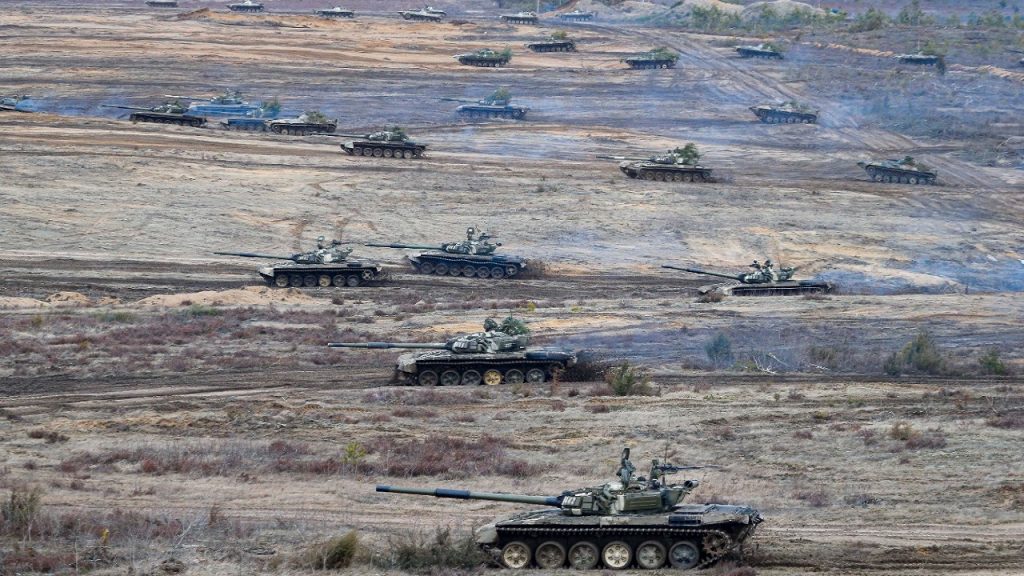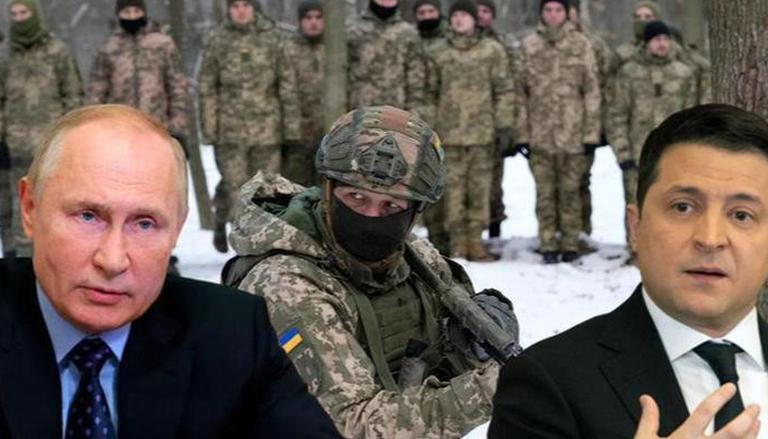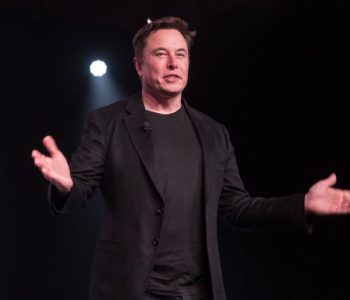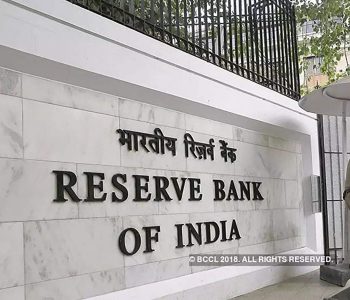Why is Russia invading Ukraine and what does Putin want?

KATHMANDU: Russian President Vladimir Putin’s order to attack Ukraine has sent relations between Moscow and the West spinning to their lowest point since the Cold War. The invasion, accompanied by missile attacks and airstrikes on Ukraine’s capital, Kyiv, and other major cities, is his most direct attempt yet to redraw the global security map and restore Russia’s sphere of influence to the days of the Soviet Union and Warsaw Pact, more than 30 years ago.
It is an unprecedented gamble for Mr. Putin, who is now reckoning with a plethora of new sanctions from the U.S. and Europe aimed at hamstringing his country’s economy. The U.S. has promised a raft of new measures it views as commensurate with the Kremlin’s aggression but Mr. Putin has leverage, too: Russia is Europe’s major supplier of natural gas.
President Biden on Thursday said Washington would impose additional sanctions on Russian banks and high-worth individuals in the U.S. after laying out an initial series of measures earlier in the week. He said the sanctions, which he didn’t outline in detail, would crimp the Russian military’s ability to expand and restrict the country’s largest state-owned business.
“Putin’s aggression in Ukraine will end up costing Russia dearly, economically and strategically,” Mr. Biden said. “We will make sure that Putin will be a pariah on the international stage.”
Hours before the strikes began, Ukrainian President Volodymyr Zelensky made a Russian-language appeal to Russian citizens, saying that his nation posed no threat to Russia and that responsibility for unleashing a conflict that could cost tens of thousands of lives would lie squarely with Mr. Putin. Mr. Zelensky, who is of Jewish origin, ridiculed Russian assertions that Ukraine was somehow beholden to neo-Nazis, pointing out that eight million Ukrainians died during World War II and that his own grandfather was a decorated Soviet officer at the time.
As Mr. Putin announced the invasion of Ukraine, the United Nations Security Council met to discuss the crisis, with diplomats agreeing to vote on a resolution against Russia, though little is expected to come of it: Russia holds a veto as a permanent member.
By Thursday afternoon, Russian tanks had been deployed on the outskirts of Kharkiv, Ukraine’s second-largest city. Ukrainian officials said another advance was under way to Kherson, a city on the Black Sea north of Crimea, which Russia seized eight years ago. Fighting broke out, too, around the Chernobyl nuclear power plant, the site of a devastating meltdown in 1986. The sealed reactor is still surrounded by an exclusion zone because of high levels of radiation.
Mr. Zelensky warned that, through its actions, Russia was risking another ecological disaster. “This is a declaration of war against the whole of Europe,” he wrote on Twitter.
What is happening in Ukraine?
Russian armored columns are now moving into Ukraine after a series of missile attacks and air strikes targeted Kyiv and other cities in an early-hours barrage. On Thursday afternoon local time, Ukrainian officials said Russian helicopter-borne troops were trying to seize an airport on the outskirts of Kyiv while Ukrainian forces battled Russians advancing in the Chernihiv region north of Kyiv.
In a televised speech, Ukraine’s president, Mr. Zelensky, characterized Russia’s attack as “villainous” and said, “From today our states are on different sides of world history. The Russian state is on the path of evil.”
The assault came hours after Mr. Putin announced an operation to “demilitarize and de-Nazify Ukraine,” as he put it, promising to put its leaders on trial. Earlier in the week, Russia recognized the independence of two breakaway regions in eastern Ukraine and began sending troops to those areas, throwing relations between Moscow and the West into meltdown.
Ukrainian officials said that the initial wave of strikes targeted military installations, airfields and government facilities across the country.
Ukraine’s leaders are now mobilizing some 36,000 reservists as it braces for a full invasion. Ukraine’s National Guard and border-control service are activating an additional 10,000 reserve members. The country’s standing military numbers some 200,000 uniformed troops.
Prior to Thursday’s attack, Russia had deployed as many as 190,000 troops along Ukraine’s borders in what U.S. officials had described as the largest military mobilization in Europe since World War II.

Why did Russia invade Ukraine?
Mr. Putin says the main objective is to defend the Russian-speakers in Ukraine, especially those in the two self-declared republics of Donetsk and Luhansk, which broke away from Ukrainian control in 2014. Moscow has provided hundreds of thousands passports to people living there, providing it a pretext to defend its interests in the area. Ukraine has denied Moscow’s claims that it is forcibly trying to take the territory back.
More significantly, Mr. Putin regards Ukraine and Russia as inseparable, “one people, a single whole.” He has questioned Ukraine’s right to exist, citing a similar language and shared history and culture. Ukraine was part of the Soviet Union before its collapse at the end of the Cold War in 1991, and it borders Russia to its eastern flank, where, historically, it has been most vulnerable to invasion. The disintegration of the Soviet Union left Russia with a vastly depleted population, territory and economy. It also diminished Russia’s superpower status and, in Moscow’s eyes, left it vulnerable to attack after Ukraine signaled its intent to one day join the North Atlantic Treaty Organization and the European Union.
What has Biden said?
Speaking from the White House on Feb. 22, Mr. Biden called the Russian troop movements “the beginning of a Russian invasion of Ukraine” and announced what he said was a first round of sanctions targeting Russia’s financial institutions, its ability to secure money from the West and well-connected individuals.
On Thursday he announced plans for a wider range of measures, saying he was determined to make Russia pay a heavy price for its aggression and make Mr. Putin a pariah on the world stage. Mr. Biden said the package of sanctions announced doesn’t include disconnecting Russia from the Swift global-payment system, citing opposition from some countries in Europe. “It is always an option, but right now that’s not the position that the rest of Europe wishes to take,” he said.
Plans for Mr. Biden to meet with Mr. Putin, which had been under way, are now on hold.
What are NATO and the West doing in response to Russia?
So far, the West’s response has largely been limited to sanctions. The initial measures laid out by Mr. Biden and European governments were modest at first but ramped up significantly as Russia geared for a full-scale invasion. One significant measure: Germany halted the Nord Stream 2 natural gas pipeline.
The Biden administration also said it would impose new sanctions on the project after Berlin said it wouldn’t give the go-ahead to the pipeline, which pumps natural gas from Russia to Germany, a major customer. Japan, Australia and Canada also announced that they would impose sanctions against Russia.
Taken together, the measures are supposed to limit Russia’s access to the global financial system but fall short of many of the broader measures that officials said were being weighed should Russia outright invade its neighbor. But officials said the moves made on Feb. 22 could be ratcheted up.
NATO allies are bolstering the alliance’s eastern flank, which borders Ukraine, deploying jet fighters and ships to the region in response. The EU has set out plans for loans and grants to Ukraine worth more than $1.3 billion. The Pentagon ordered thousands of troops to prepare for possible deployment. NATO’s Secretary-General Jens Stoltenberg called Russia’s invasion an act of war, “deliberate, cold-blooded and long-planned.”
Is Ukraine a U.S. ally and is it part of NATO?
Since the breakup of the Soviet Union when Ukraine gained its independence, the U.S. has had diplomatic relations with the country. The U.S. is eager to see Ukraine thrive as a democracy in the face of what the State Department describes as continued Russian aggression.
Ukraine isn’t a part of the North Atlantic Treaty Organization, but it is a partner country to the military alliance, and agreements in place mean it could become a NATO member in the future. Mr. Biden has said that Ukraine’s prospective membership in NATO isn’t likely in the near term, though he said the decision ultimately belongs to the alliance.
What is the feeling in Ukraine?
Mr. Zelensky, Ukraine’s president, gathered his national security and defense council after Mr. Putin announced he was recognizing the independence of the breakaway states. In a late-night speech to the nation on Feb. 21, he said Russia’s latest actions amounted to a breach of Ukrainian sovereignty, and later struck a defiant tone, urging all Ukrainians with military experience to join the fight and others to donate blood.
“We are defending our freedom,” he said. “Be ready to support your state on the squares of your cities.”
Ukraine’s leadership has previously said that the Kremlin’s likely aim isn’t to invade but to destabilize the country in more insidious ways. But as the violence worsened in the areas around the two breakaway regions of Donetsk and Luhansk, some families began preparing for worse to come. On Feb. 23, Ukraine’s government declared a state of emergency and began to mobilize reservists as it called on its own citizens in Russia to leave.
U.S. intelligence assessments project that 25,000 to 50,000 civilians would be killed or wounded if Russia mounted an all-out attack to take over the entire country. Between 3,000 and 10,000 Russian troops and between 5,000 and 25,000 Ukrainian troops would be killed or wounded, according to the assessments, which added that one million to five million Ukrainians would be displaced.
“You can be certain that hundreds of Ukrainian service members have already died from the Russian strikes,” a senior Ukrainian Interior Ministry official said.
On the streets in Kyiv, restaurants and cafes were largely closed while veterans set up tents where volunteers could sign up to fight. Long lines appeared at gas stations and ATMs as people prepared to leave for the relative safety of Lviv, a city near the Polish border. Ukraine’s central bank, meanwhile, limited cash withdrawals to 100,000 Ukrainian hryvnia a day, equivalent to about $3,340. It also fixed the official exchange rate.
What is Nord Stream 2 and what part does it play in the crisis?
Nord Stream 2 is a 765-mile-long natural gas pipeline from Russia, running under the Baltic Sea to Germany. The project is intended to enable Russia to circumvent Ukraine and other countries and pipe its gas directly into Europe at lower cost. Its fate has been a central matter of debate in the current crisis.
The U.S. has opposed the pipeline, fearing it would undermine Ukraine and strengthen Russia’s grip on the European energy market and Moscow’s political leverage. But out of deference to U.S. ally Germany, the Biden administration last year opted to waive sanctions on the project.
On Feb. 22, the morning after Russian troops moved into Ukraine, Germany froze the pipeline, a decisive move that undermines Mr. Putin’s efforts to drive a wedge between Europe and the U.S.
“There will be a new assessment of the security of our energy supply considering what has happened in the last days,” German Chancellor Olaf Scholz said. WallStreetJournal














Facebook Comment